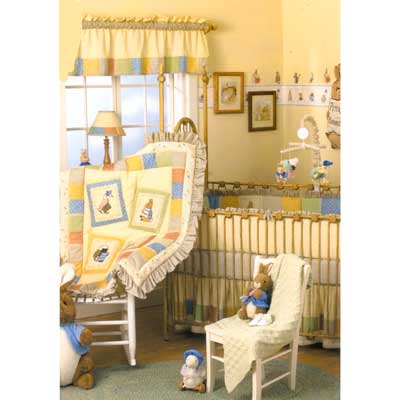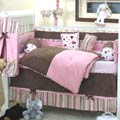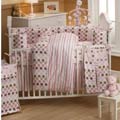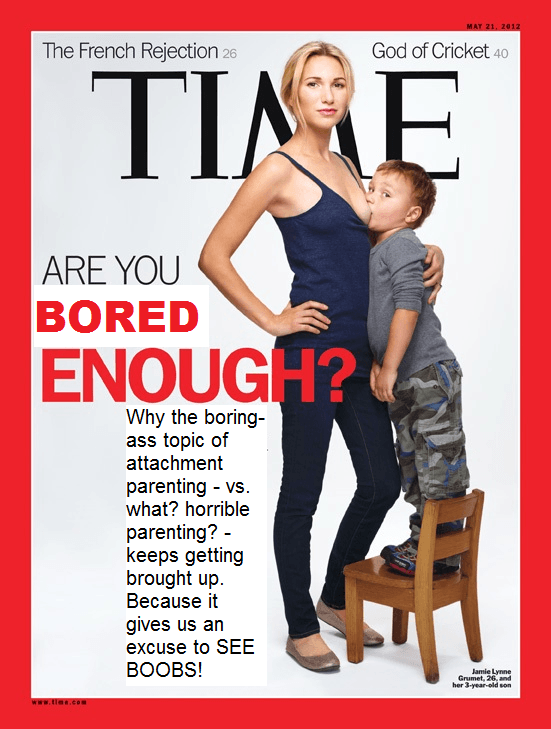 I came across a dance blog with reference to pregnancy. I’m sure some dancers out there are wondering how becoming pregnant will affect their ability to perform, so I will post the following entry from Teaching Smart. I hope it is helpful!
I came across a dance blog with reference to pregnancy. I’m sure some dancers out there are wondering how becoming pregnant will affect their ability to perform, so I will post the following entry from Teaching Smart. I hope it is helpful!
Online Support for Mom’s with High-Risk Pregnancy
lovemykids72704 is the group owner of Moms Who Have or Had a High-Risk Pregnancy at CafeMom. She shares some very personal, moving details about her 2 “high risk” pregnancies and why she decided to start the group. All moms-to-be share a common hope that their baby will be born healthy. Having a pregnancy that’s been deemed “high risk” adds some worry and uncertainty to things (although many, many women go on to deliver babies that are just fine), which is why it’s so wonderful to get support and encouragement from other pregnant moms in a similar situation. You can connect with them in High-Risk Pregnancies and Moms Who Have or Had a High-Risk Pregnancy.
Tell me a little about why you started the group.
I started this group because I had two high-risk pregnancies and was very lonely and could have used the support of other women who were going through similar experiences.
Are you pregnant now?
I’m not currently pregnant but would like to try for number three when the time is right. Both of my pregnancies were high-risk. With my first, I got an intrauterine infection that exposed the placenta and the baby — I went into preterm labor at 25 weeks and the baby girl (her name was Heather) was stillborn. We don’t know how I got the infection and why I didn’t show any signs of an infection until it was too late.
With my son it was different. I had preeclampsia and was on bed rest for five months of my pregnancy due to contractions, but everything turned out fine in the end despite the bumps in the road.
What would you say are the most common reasons moms in the group are considered high-risk?
Most women are considered high-risk if they’ve had a high-risk pregnancy previously — and there are many reasons a pregnancy can become high-risk, including a blood clotting disorder, incompetent cervix, diabetes, and preeclampsia.
What are the most common concerns of the moms in the group?
The main concern is to have a healthy baby, of course! However, a lot of them just want to be understood and to find the reasons and causes for their situation. They also want advice from other mothers — companionship and support, which is what the group gives.
Do moms typically report back after the birth to let others know how things turned out?
Some mothers do report back — you can make life-long friends in this group and we love to know how everything went.
Anything else you’d like moms to know?
I guess I’d like other moms to know that you are not alone. There is someone in this group that has — or had — the same issues that you might have. It helps to talk about them. I felt considerable loneliness when going through my pregnancies and would have loved to have had this group then. Pregnancy is not always an easy thing!
The Ultimate New Baby Shopping List
I’m sure the new grandparents, aunts, and godmothers are already hitting the stores in sweet anticipation, and that your closets are starting to fill up with pretty little outfits, soft baby blankents, and sweet little knitted things. But with all the excitement and planning (not to mention the fatigue brought by the third trimester) it’s easy to forget some little things that might prove important when baby comes. You can always send Dad on midnight trips to Walgreen’s… or you can use this list from TheBump to make sure you’re prepared for Baby’s arrival!
The one thing you’ll need to know when planning baby’s wardrobe is that babies poop often and generously! Since baby poo is runny, it tends to get on EVERYTHING! You may find yourself changing baby’s outfit a few times a day… (and doing lots of poopy laundry, oh joy!)
Layette
10-15 bodysuits or onesies (wide head openings, snaps at bottom)
4-6 one-piece pajamas
2 blanket sleepers (for winter baby)
2-3 sweaters or jackets (for winter baby)
4-6 rompers or other outfits (preferrably with feet, as socks tend to get lost!)
4-7 socks or booties (shoes are cute but unnecessary until baby walks)
1-3 hats (broad-brimmed for summer baby, soft cap that covers ears for winter baby)
No-scratch mittens
Bunting bag or fleece suit (for winter baby)
Swimsuit for (summer baby)
Nursery
Crib, cradle or bassinet
• Slats no more than 2 3/8 inches apart
• Corner posts no more than 1/16 of an inch above frame
• Top rails at least 26 inches above mattress
Firm, flat mattress fit snugly in crib (less than two fingers should fit between mattress and crib)
2-3 washable crib mattress pads
Bumper pads covering inside perimeter (secured by at least six ties or snaps, with all extra length removed)
2-4 fitted crib sheets
4-6 soft, light receiving blankets
1-2 heavier blankets (for colder climates)
Rocking or arm chair
Music box, sound machine or CD player
Crib mobile with black and white images (remove when baby can support self on hands and knees)
Baby monitor
Nightlight (good for night-time feedings and diaper changes)
Dresser
Toy basket
Swing or bouncy chair
Changing
Changing table or cushioned changing pad for low dresser or bureau, with safety strap or railing
Changing table pad
4-6 washable changing table pad covers
Diaper pail & liners
Diaper cream
Unscented baby wipes (although for Baby’s sensitive skin, rinsing over the sink works best!)
Soft washcloths
2-3 boxes disposable newborn-size diapers {or}
6-10 dozen cloth diapers and 6-8 diaper covers
Bath
Baby bathtub
Baby soap/shampoo
2-4 soft towels or hooded baby towels
Baby hairbrush
Soft washcloths (use a different color or pattern than your diaper washcloths!)
Feeding
For nursing moms:
2-3 nursing bras (Breasts swell following birth, so start with one size larger than your maternity bra. Wait until size settles down — about two weeks after birth — to purchase additional bras.)
Nursing pads
Nipple cream (lanolin)
Nursing pillow
Pump (even if you plan only to nurse, a pump will allow you to leave milk for baby if you want or need to separate)
Milk storage bags
Breast milk is the healthiest as well as most convenient food for new babies: no bottles, nipples, warmers, or formula needed! However if you will be unable to nurse, here’s what you’ll need:
10-16 bottles and nipples, both four and eight ounce (if fed strictly by the bottle, baby will go through about ten in the four ounce size per day)
Liners, for disposable bottles
Formula
Bottle warmer (cuts down on nighttime trips to and from the kitchen)
Bottle sterilizer (if your dishwasher doesn’t have one)
Bottle brush
Dishwasher basket for small items
4-8 bibs
Burp cloths (or cloth diapers)
High chair
2-4 pacifiers
Medicine Cabinet
Baby nail clippers
Cotton balls (don’t use swabs to clean baby’s nose or ears)
Baby thermometer
Bulb syringe/nasal aspirator
Medicine dropper or spoon with measurements
Infant acetaminophen (Tylenol)
Antibiotic cream
Saline nasal drops
Baby gas drops
Travel
Infant or convertible car seat
Stroller (reclining to almost flat for infants)
Diaper bag
Changing pad
Baby carrier/sling
For Mom
Ice packs (in case of tearing during birth or swelling after)
2-3 week supply of ultra absorbent sanitary pads
Panty liners
DIY Birth Announcements!
When your little bundle of joy arrives, you may feel like shouting from the rooftops so the whole world can share in your good fortune! Luckily, there is a more effective way of spreading the news… and you can have the fun of creating them yourself! Get down to your local craft store (hmm, preferably before the birth, if you can plan ahead!) and get started!
Pretty papers, rubber stamps, ribbons, bows, glitter, stickers, flowers, pretty punches… there are no limits for the creative genius inside you!
Here are some absolutely adorable ideas from Impress Rubber Stamps:
If your pregnancy was a painting, what would it look like?
If you could paint your pregnancy, with all the emotions it evokes, what would it look like? Tumultuous or serene? Bright colors or muted? Realistic or abstract?
One artist, named Kelly Kenedy, taps into the emotion of pregnancy to create over 40 canvases that now hang in the new Pregnancy Care Center facilities in Springfield, Missouri. She says that she hopes her artwork will help young women and men facing unplanned pregnancies find strength and courage.
One of her favorites is a canvas that hangs in a waiting area. The focal point of the acrylic and latex painting are two turquoise blue shapes that look much like the top of eggs standing on end. Randomly placed in front of the “eggs” are chocolate brown squares, and the background is an atonal swirl of off-white and beige.
“To me, the egg shapes speak to birth,” says Kennedy, who sees the ovals and squares as separate dimensions on the canvas, with the “undefined” background space tapping into the uncertain emotions of the women who come to the center. “To me, it looks like the profile of a women when she’s pregnant,” Kennedy adds. “When she comes in here, her emotions are in flux. There’s excitement and there’s fear.”
Two other large canvases, hanging in the board office, represent another style. With stark black backgrounds, these oil paintings use bright reds and yellows to evoke the idea of small eggs tumbling down across the canvas. “The board makes a lot of important decisions in here. Out of one decision a lot of things come tumbling out,” Kennedy explains.
Artwork can be both stimulating and therapeutic. The abstract paintings in the Center speak to the mothers and fathers who come there. “We are at an abstract point in our lives… We feel disjointed, so it’s relatable,” said one young woman who used their services and now works at the Center herself.The artwork has received lots of positive attention. “It’s very comforting and welcoming to them,” says the Center’s executive director.
Springfield’s Pregnancy Care Center provides prenatal and postnatal services to mothers and fathers, relationship programs, mentoring, and the Choices abstinence education program. To learn more, visit www.pccchoices.org
Pregnancy & Baby: Saving Pennies
We’re all looking to save a little money these days. Your little bundle of joy is sure to cost you a little bundle of cash, but there are ways to save some pennies without depriving yourself or your baby.
I borrowed the following links from Pregnancy & Baby Blog, and hope you’ll find them helpful!
Tickled Pink: Decorating a nursery for your little princess!
One of the most fun things about preparing for baby is, of course, decorating the nursery… Especially if you know that a little girl is on the way! Although your first thoughts might be quilted in various shades of pink, with plenty of bows and lace, there are actually lots of creative options when it comes to choosing colors and themes for your little princess’s room!
From Hawaiian beaches to garden tea parties, from dragons and unicorns to cowgirls and circuses, your choices are practically unlimited! Unique Baby Gear has lots of creative ideas under “Girl Room Themes,” like this darling Beatrix Potter decor:

I also like this carousel horse theme:

For a modern, sophisticated look that is still pretty, you can decorate your nursery in pink and brown. Here are a few examples of how it can be done:




While themes like those above are colorful and exciting, some new parents want to keep the nursery decor simple. “For a baby and for new parents, serenity is key,” says designer David Netto on HGTV.com. See his 11 Ways to Create a Modern Nursery for tips on creating a peaceful sanctuary for your little one. He suggests using subdued colors for the walls, floor and major furniture pieces, and adding bright accents with bedding, wall art, rugs, window coverings and accessories. He also advocates gender-neutral design and adaptable furniture (cribs that turn into toddler beds, basinettes that transform into toy baskets), streamlined peices with built-in storage and double-duty items (like a dresser wtih a chanaging table on top). He also advises keeping your child in mind: “Most of the furniture in the nursery should be scaled down for your child and low to the floor,” David Netto adds. “And hang pictures at her eye level–not yours.
ButterflyCraze.com has some pretty accents that will add interest to your nursery. Hanging angels, giant daisies, and fluttering butterflies will turn her room into a fairy-tale land.



Browsing wall art for your new arrival is also fun! DistinctiveNurseries.com has lots of posters, prints, and wall hangings in every style and color. The cool thing about them is, if the price tag is too hefty you can get handy and re-create the same look yourself! Here are some that I like:



Well, this post could go on and on, but I’ll leave the rest of the Googling to you! Window dressings, cribs and bassinets, murals, rockers… Let the decorating begin!
All about Water Births
 Water birth is a method of giving birth immersed in a tub of warm water. Proponents believe this method to be safe and provides many benefits for both mother and infant, including pain relief and a less traumatic birth experience for the baby. Women who have chosen water birth describe it as being peaceful, joyous, comforting, and more relaxing than a “land birth.” Critics argue that the procedure introduces unnecessary risks to the infant such as infection and water inhalation.
Water birth is a method of giving birth immersed in a tub of warm water. Proponents believe this method to be safe and provides many benefits for both mother and infant, including pain relief and a less traumatic birth experience for the baby. Women who have chosen water birth describe it as being peaceful, joyous, comforting, and more relaxing than a “land birth.” Critics argue that the procedure introduces unnecessary risks to the infant such as infection and water inhalation.
Benefits for Mother:
- Water is soothing, comforting, relaxing. Water birth is a form of hydrotherapy which, in studies, has been shown to be an effective form of pain management for a variety of conditions especially lower back pain (a common complaint of women in labor).
- In the later stages of labor, the water seems to increase the woman’s energy.
- The buoyancy lessens her body weight, allows free movement and new positioning.
- Buoyancy promotes more efficient uterine contractions and better blood circulation, resulting in better oxygenation of the uterine muscles, less pain for the mother, and more oxygen for the baby.
- Immersion in water often helps lower high blood pressure caused by anxiety.
- Water seems to alleviate stress-related hormones, allowing the mother’s body to produce endorphins, which are pain-inhibitors.
- Water causes the perineum to become more elastic and relaxed, which reduces the incidence and severity of tearing and the need for an episiotomy and stitches.
- As the laboring women relaxes physically she is able to relax mentally, concentrating her efforts inward on the birth process.
- The water provides a sense of privacy, which releases inhibitions, anxiety, and fears.
Benefits for Baby:
- Provides a similar (warm, watery) environment as the amniotic sac.
- Eases the stress of the birth, providing reassurance and security.
Risks involved in Water Births:
Although there are no proven disadvantages to birthing in water, it is still a controversial means of delivery. Critics cite possible risks, including:
- Water aspiration. If the baby is experiencing stress in the birth canal or the umbilical cord becomes kinked or twisted, the baby may gasp for air, possibly inhaling water into the lungs. This would be rare because babies do not inhale air until they are exposed to air. They receive oxygen through the umbilical cord until they start to breathe on their own or until the cord is cut.
- The umbilical cord could snap as the baby is brought to the surface of the water. This is preventable by using caution when lifting the baby up to the mother’s chest.
- Another concern is that the water could increase the risk of infection. However, studies to date do not show increased risk of transferring bacteria from infant to mother or mother to infant.
- Slowed labor, due to the documented relaxing effects of water, may be seen as a benefit rather than a rsik. Laboring in water is sometimes associated with a decrease in the intensity of contractions, and is thus thought to slow labor.
- Maternal blood loss. For care providers who are inexperienced in delivery in water, it may be difficult to assess the amount of maternal blood loss. Although there are well-developed methods of determining maternal blood loss in water, many providers prefer to deliver the placenta out of water for this reason.
Water births may be discouraged in the following situations, and should be discussed with your health care provider:
- If you have Herpes: Herpes transfers easily in water, so you will want to discuss this thoroughly with your health care provider.
- If your baby is breech: Though water birth has been done with bottom or feet first presentations you will want to discuss this thoroughly with your health care provider.
- If you have been diagnosed with excessive bleeding or maternal infection.
- If you are having multiples: Though water births have been successful with twins around the world, you will want to discuss this thoroughly with your health care provider.
- If preterm labor is expected: If a baby is two weeks or more prior to due date, water birth is not recommended.
- If there is severe meconium: Mild to moderate meconium is fairly normal. Since meconium floats to the surface in a tub, your health care provider will watch for it and remove it immediately, or help you out of the tub.
- If you have toxemia or preeclampsia: You will want to thoroughly discuss this with your health care provider.
For more information, check out:
Wikipedia (includes history and studies associated with water births)
YourWaterBirth.com (Offers supplies for an at-home water birth, such as pools, hoses, thermometers, protective floor covers, birth kits, and more)
Your pregnancy diet can decrease baby’s risk of obesity
What pregnancy eating style do you think would contribute toward obesity in children? A high fat diet? Too many extra calories? Junk food? Well, none of those are good for your growing baby, but here’s some surprising news: Women who eat too little during pregnancy increase the risk of obesity in their children! Go figure!
Researchers have discovered eating too few calories while pregnant changes the way that a baby’s fat cells behave once they are born. It causes excessive levels of inflammation which can damage the body’s ability to metabolise food, which leaves the youngsters at risk of putting on excessive weight.
The study is headed by Dr Helen Budge, who reminds us that what a mother eats while pregnant can have a large impact on the health of their baby in later life. Instead of viewing obesity as entirely the fault of the individual, pregnant women must realize that genetic and environmental factors play a huge part. “What is particularly interesting is that we are not just talking about babies that have been malnourished while in the womb but those that are born within normal weight ranges,” says Dr. Budge.
Over-eating is similarly harmful too. So what is the advice? A healthy, balanced diet, of course!
Pregnancy pick-me-ups: A relaxing morning face mask
As you may know, keeping your stress levels low has beneficial effects on your unborn baby. So perhaps we can consider pregnancy one of the few times when you’re actually encouraged to indulge yourself. Here’s a great way to start a relaxing day: treat yourself to this incredibly soothing facial mask designed to help dry skin feel baby-soft. Compliments of ivillage!

1 cup of rolled oatmeal
2 tablespoons of powdered milk
1 tablespoon of water
2 or 3 gauze squares
1 rubber band
Blend the oatmeal in a food processor until it becomes a fine powder. Put it in a bowl and add powdered milk. Gradually stir in the water until the mask reaches a creamy consistency. Unfold the gauze squares and position them on your face so that your eyes, nose and mouth are exposed. Generously apply the oatmeal mask on top, taking care to overlap the edges of the gauze so that the mask sticks to your face. While you can apply this mask directly to your face, the gauze makes for more even coverage.
Draw a hot bath while you’re waiting; the steam will enhance the effects of the mask. After 15 minutes, remove the mask by lifting up and removing the squares of gauze. Fold them so that the oatmeal is contained, seal with a rubber band, and drop into the bath for an all-over skin-softening effect.
Have a wonderful, relaxing, beautiful day!!





















